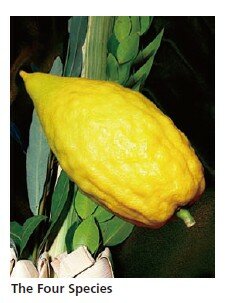| The festival of Sukkot |

|

|
|
Sukkot is also known as the Festival of Booths, falls on 15 Tishrei, five days after Yom Kippur. The festival is referenced in Levitucus 23:34, Exodus 23:16 as the “Feast of Ingathering” and In rabbinic times, the holiday was also referred to as the “Season of our Rejoicing.”
Traditionally, roofs are meant to allow for shade from the sun but not restrict access to a starry view at night. Palm leaves are usually used. The openness of the sukkah, likewise serves as a reminder to us to have an open heart to spirituality and humanity. The first two days are Yom Tovim and we refrain from work. The following five days are Hol Hamoed and restrictions mostly to work are lifted. While some people make an effort to eat every meal in the sukkah, rabbis remind us that in rain one is not necessarily required to eat in the sukkah, as there should not be any discomfort as we should enjoy our time in the sukkah. There is a great tradition of hospitality during the week of the festival. In addition to inviting friends and family, celebrating on a communal level is common. Additionally, a number of spiritual Ushpizin (visitors or guests) are included on the honoured guest list including: Abraham, Isaac, Jacob, Joseph, Moses, Aaron, and David. This practice further strengthens the bond we have with our ancestors and serves as a reminder of our continuity as a people. The Sukkah are often decorated with hanging fruits and vegetables with children being encouraged to participate and actively involved. During Sukkot we learn to take the Four Species (the citron/etrog, the myrtle branch/haddas, the willow/arava, the date palm/lulav) and aquire them before the holiday. Shmini Atzeret On 22 Tishrei the day after the seventh day of Sukkot, is the holiday of Shemini Atzeret - also known as the ‘Eighth Day of Assembly.” In Israel, Shemini Atzeret is also the holiday of Simchat Torah. Outside of Israel, where there are extra days of holidays, the second day of Shemini Atzeret is Simchat Torah which is held on 23 Tishrei. Shemini Atzeret is a holiday in its own right and does not involve any of the special observances of Sukkot. Rabbinic literature explains the holiday in this way: our Creator is like a host, who invites us as visitors for a limited time, but when the time comes for us to leave, He has enjoyed himself so much that He asks us to stay another day. The holiday is a Yom Tov where no work is permitted. The Yitzkor Memorial service is also recited on this day. Simchat Torah Simchat Torah means “Rejoicing in the Torah.” This holiday marks the completion of the annual cycle of weekly Torah readings. On Simchat Torah, we read the last Torah portion, then proceed immediately to the first chapter of Genesis, reminding us that the Torah is a circle, that never ends. Seven rotations are made around the synagogue. This completion of the readings is a time of great celebration. Plenty of high-spirited singing and dancing in the synagogue with the Torahs. As many people as possible are given the honour of an aliyah (reciting a blessing over the Torah reading); in fact, even children are called for an aliyah blessing. The greatest honours however are reserved for the Chatan Torah (Groom of the Torah) and Chatan Bereshit (Groom of Bereshit), those selected to recite the final verses and beginning verses of the Torah respectively. (Issue September 2010)
|

















 During the holiday we build a sukkah, a temporary hut where we traditionally eat and sleep. It symbolises the temporary huts that our ancestors lived in during the forty years they wandered in the desert. The design is very specific, the structure must have at least three walls - only two full walls and a part of a third are actually required. The fourth side may be open or be an adjoining part of the house. The roof must be a temporary structure and be covered with anything that grows from the ground and has been cut.
During the holiday we build a sukkah, a temporary hut where we traditionally eat and sleep. It symbolises the temporary huts that our ancestors lived in during the forty years they wandered in the desert. The design is very specific, the structure must have at least three walls - only two full walls and a part of a third are actually required. The fourth side may be open or be an adjoining part of the house. The roof must be a temporary structure and be covered with anything that grows from the ground and has been cut.
